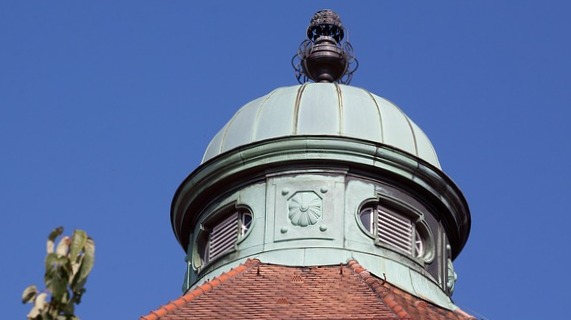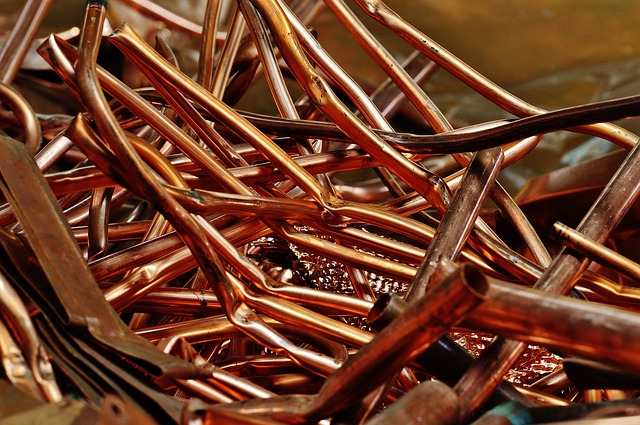Copper in construction

|

|
Copper is a soft, malleable, ductile metal with high thermal and electrical conductivity and good resistance to corrosion due to the protective patina that forms on its surfaces. It has low thermal expansion, making it stable and resistant to deterioration from movement. It is relatively light compared to lead, and requires little maintenance. It is non-magnetic and has good biofouling resistance
Copper has the chemical symbol Cu (from Latin: cuprum) and atomic number 29. It has been used as far back as 8,000 BC because it is a native metal, occurring naturally in a useable form. It is also found in the minerals cuprite, malachite, azurite, chalcopyrite and bornite, and is a by-product of silver production.
It is commonly used in the construction industry to form pipes and tubing for potable water distribution and heating and cooling systems, as it is malleable and joints can be easily formed by soldering. The ease with which it can be made to form complex shapes means it is also used as a cladding and flashing material, for gutters, downpipes and coping. Electrical and communications cables are often formed with copper wire.
It can be hot and cold worked, and joints can be formed by soldering or welding, using mechanical fasteners, by brazing, or with adhesives. It can specified according to the temper levels; soft, half-hard, hard, spring and extra-spring.
Copper is a pinkish-orange colour when first exposed, but can oxidise to a blue green colour. This oxidisation is sometimes allowed intentionally to create a characteristic green cladding. It can also be given a range of brown colours.
It is generally recyclable, and this combined with its long life means it has relatively low life cycle impacts.
Brass is an alloy of copper and zinc.
[edit] Related articles on Designing Buildings
Featured articles and news
Latest Build UK Building Safety Regime explainer published
Key elements in one short, now updated document.
UKGBC launch the UK Climate Resilience Roadmap
First guidance of its kind on direct climate impacts for the built environment and how it can adapt.
CLC Health, Safety and Wellbeing Strategy 2025
Launched by the Minister for Industry to look at fatalities on site, improving mental health and other issues.
One of the most impressive Victorian architects. Book review.
Common Assessment Standard now with building safety
New CAS update now includes mandatory building safety questions.
RTPI leader to become new CIOB Chief Executive Officer
Dr Victoria Hills MRTPI, FICE to take over after Caroline Gumble’s departure.
Social and affordable housing, a long term plan for delivery
The “Delivering a Decade of Renewal for Social and Affordable Housing” strategy sets out future path.
A change to adoptive architecture
Effects of global weather warming on architectural detailing, material choice and human interaction.
The proposed publicly owned and backed subsidiary of Homes England, to facilitate new homes.
How big is the problem and what can we do to mitigate the effects?
Overheating guidance and tools for building designers
A number of cool guides to help with the heat.
The UK's Modern Industrial Strategy: A 10 year plan
Previous consultation criticism, current key elements and general support with some persisting reservations.
Building Safety Regulator reforms
New roles, new staff and a new fast track service pave the way for a single construction regulator.
Architectural Technologist CPDs and Communications
CIAT CPD… and how you can do it!
Cooling centres and cool spaces
Managing extreme heat in cities by directing the public to places for heat stress relief and water sources.
Winter gardens: A brief history and warm variations
Extending the season with glass in different forms and terms.
Restoring Great Yarmouth's Winter Gardens
Transforming one of the least sustainable constructions imaginable.






















